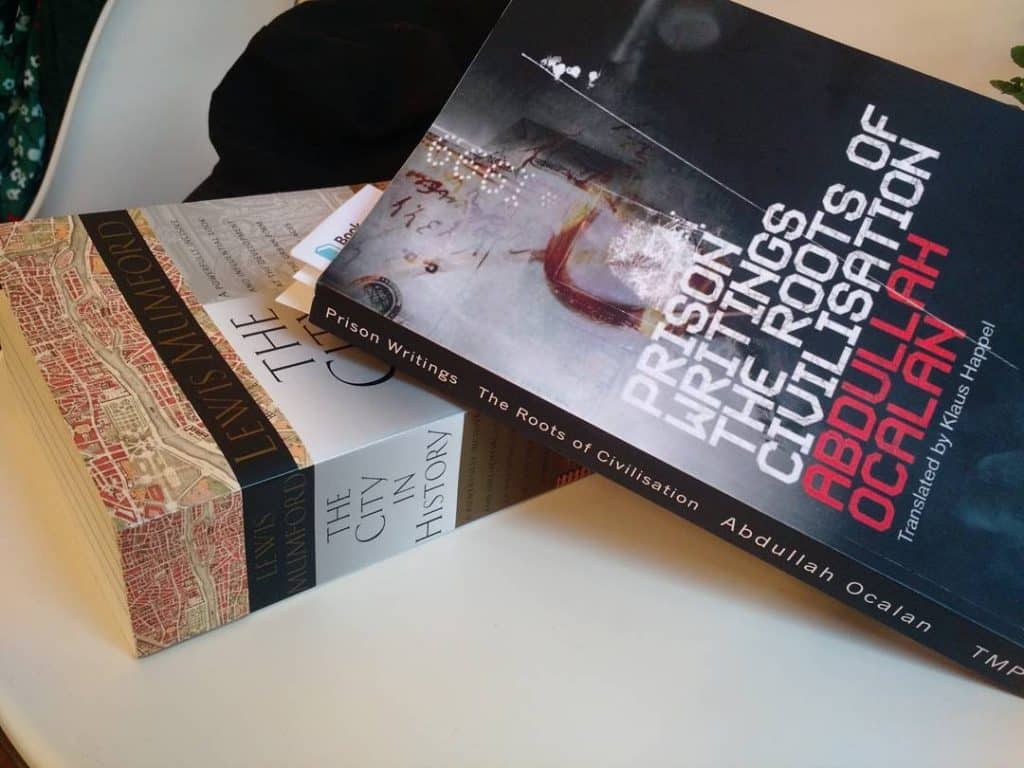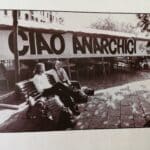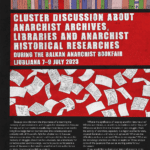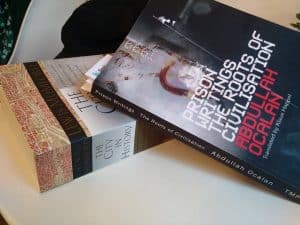Photo description: Abdullah Öcalan’s book “Prison Writings: The Roots of Civilization” laying tilted on top of Lewis Mumford’s “The City in History”.
This photo was in no way chosen accidentally. Both if viewed from the interdependence between the two books, but also viewed from the future, so stay tuned for more :). Future aside, for now I present you a review-ish — probably more of a botched summary — of “The City in History”.
Our Being is Becoming,
L. Amargi.
Notes on the edition
The page numbers are from the edition with ISBN 9780156180351. Luckily the PDF available on libgen.io has the same page numbers, so you can easily follow the review if you don’t have a physical copy. And yes, I am definitely endorsing piracy.
Review
Reviewing such a monumental book is in of itself a monumental task, one for which no one is up to task, least of all me. There are many observations that you will simply not find in here. No review, no summary, could ever substitute reading this book.
The best one sentence summary of the book is given by this:
“When both the evil and the remedy are indistinguishable, one may be sure that a deep-seated process is at work.” — p. 544
To give a sense of scale to each potential reader: the book is partitioned in chapters and subchapters, the latter averaging about 5 pages each. And almost all of which lend themselves to a book of their own.
In order to read Mumford one must understand that we all find ourselves on very murky ground (especially when studying ancient history) in terms of what we know, or even can now, because most of it has been lost to us, as the author readily admits, and makes extremely clear [10]. Therefore, some speculation on the author’s part is understandable. Furthermore, Lewis Mumford is very careful not to project our own involuted social theories onto the past, as he deservingly criticizes Thomas Hobbes [20], and contemporary social scientists of doing [30]:
“the supposedly combative ‘cave man,’ whose purely imaginary traits strangely resemble those of a nineteenth-century capitalist enterpriser.”
Furthermore, Mumford is a generalist, a dialectical thinker, and a moral philosopher. Weaving together the science of many domains with a unique moral acuity [25], [26], [27] in an absolutely beautiful dance of history.
While this book is city-centric, it is by no means a failed analysis of the emergence of civilization itself (given that for most of history most people lived in rural areas). Mumford tries to carefully point out the roots of modern civilization in the early city, and counterpoises this with its potentialities. A staunch critic of hierarchy and centralization, Mumford offers a unique developmental history of the city, and with it of the “container” (as the author calls it) through which the first rigid forms of social organization have evolved and perpetuated themselves through history.
Mumford traces the emergence of the city to the ziggurat and the priestly class — not unlike Abdullah Öcalan. What is interesting is that he considers that this form of organization wasn’t reinvented multiple times in different parts of the world, but rather it spread from the cradle of civilization in ancient Mesopotamia [40], and points to the fact that it is again our own biases who find it unimaginable that the city traversed oceans.
The author then goes through the ancient Greek civilization, which he admires, but breathlessly critiques. Espousing some of the best critiques of Plato [50] and Aristotle [60], from which he identifies the lost potentiality of Greek civilization achieving a stable order of social organization through confederation [70] that would counterbalance the parochial nature of a single city, thus giving it the chance of surviving the onslaught of Roman civilization that would eventually overwhelm it.
“All the magnitudes will be stretched in Rome: not least the magnitude of debasement and evil. Only one symbol can do justice to the contents of that life: an open sewer. And it is with the sewer that we shall begin.” — p. 214 [90]. Rome stands tall as the first Necropolis in Mumford’s analysis: congested by traffic [91], “real-estate” used for speculation [92], and creating a living hell for the most downtrodden of society [93]. Almost a perfect image of the horrors of capitalist society, perfectly present in our past.
I will now elide all the other periods treated by Mumford lest this review go on forever. Do not mistake this as dismissal of the content. If anything, the analysis of the medieval city is the most important part of the book. It dispels myths about its supposed non-democratic character, and its supposed lack of sanitary conditions. The Baroque city came as the grave-digger of the organic medieval city, thus laying the ground for the cities of capitalist society [120] with their almost inevitable march towards a new Necropolis.
Ruthless critic of capitalist modernity [121], and of about everything the city has become, Lewis Mumford lifts the fog of the past and gives the reader a unique vision that cuts through time. Laced with amazing poetic language [130] this book is a sheer pleasure to read.
So far I have only praised Mumford, but there is room for criticism. The distinction between speculation and “fact” is a bit muddled, and is hard to discern from the non-specific bibliography. But this is the consequence of the broad strokes through which Mumford paints the picture of history.
One might also impute to Mumford that he does not offer any solutions to the boundless critiques (well deserved) of the development of the city into Megapolis and towards Necropolis. But the very insistence on universal solutions to such a general problems is part of the problem. What Mumford proposes is ultimately an ecological process, very much dependent on the particularities each city finds itself in, with the only generalizeable actions of: dispersion, diffusion within the environment, and confederation of cities as a method of arresting the death march towards Necropolis.
Book excerpts
[10] p. 55
This inquiry into the origins of the city would read more clearly were it not for the fact that perhaps most of the critical changes took place before the historic record opens. By the time the city comes plainly into view it is already old: the new institutions of civilization have firmly shaped it. But there are other difficulties no less formidable; for no ancient town has yet been completely excavated and some of the most ancient cities which might reveal much, still continue in existence as dwelling places, smugly immune to the excavator’s spade.
The gaps in the evidence then, are baffling: five thousand years of urban history and perhaps as many of proto-urban history are spread over a few score of only partly explored sites. The great urban landmarks, Ur, Nippur, Uruk, Thebes, Heliopolis, Assur, Nineveh, Babylon, cover a span of three thousand years whose vast emptiness we cannot hope to fill with a handful of monuments and a few hundred pages of written records. On such swampy ground even the most solid hummock of fact may prove treacherous, and too often one must choose between not advancing at all and being dragged down into a bottomless bog of speculation. Let the reader be warned: he proceeds at his own risk!
In addition to the imperfection of the visible remains, the two great civilizations in which the city first probably took shape, Egypt and Mesopotamia, present disconcerting contrasts, which only become sharper if one includes Palestine, Iran, and the Indus Valley. While all these differences bring out significant alternatives in urban evolution, they make it difficult to give anything like a generalized picture of the origin of the city.
[20] p. 24
The primal war of “each against all” is a fairy tale: Hobbes’ bellicose primitive man has even less historic reality than Rousseau’s noble savage. As with the birds, ‘territoriality’ may have amicably settled boundary claims that only later, under more ‘civilized’ concern for property and privilege, led to savage conflicts.
[25] p. 74
Lack of adequate artificial light remained one of the greatest technical imperfections of the city till the nineteenth century. But by 2000 B.C., at all events, most of the major physical organs of the city had been created. The nineteenth-century observer would hardly have felt at home in the confused mythological conceptions, the bold sexual obscenities, or the bloody sacrificial rituals of the dominant urban religions; but scarcely any part of the physical city would have been unfamiliar to him. Those of us who are sufficiently conscious of the collective irrationality and decadence of the present age would feel equally at ease—or, better, equally ill at ease —in both territories.
[26] p. 176
If we continue in science and technology along the lines we are now following, without changing our direction, lowering our rate of speed, and re-orienting our mechanisms toward more valid human goals, the end is already in sight. [..] Instead of deliberately creating an environment more effective than the ancient city, in order to bring out the maximum number of human potentialities and the maximum amount of significant complexity, our present methods would smooth out differences and reduce potentialities, to create a state of mindless unconsciousness, in which most of man’s characteristic activities would be performed only by machines.
[27] p. 102
Though we apply terms like hunter, miner, herdsman, peasant to Stone Age groups, we are thus actually transferring a later urban usage to an early phase of human development. If we could recapture the mentality of early peoples, we should probably find that they were, to themselves, simply men who fished or chipped flint or dug as the moment or the place might demand. That they should hunt every day or dig every day, confined to a single spot, performing a single job or a single part of a job, could hardly have occurred to them as an imaginable or tolerable mode of life. Even in our times primitive peoples so despise this form of work that their European exploiters have been forced to use every kind of legal chicane to secure their services.
[30] p. 25
The fact that human beings are naturally curious did not lead inevitably to organized science; and the fact that they are given to anger and pugnacity was not sufficient in itself to create the institution of war. The latter, like science, is an historic, culture-bound achievement—witness to a much more devious connection between complexity, crisis, frustration, and aggression. Here the ants have more to teach us than the apes—or the supposedly combative ‘cave man,’ whose purely imaginary traits strangely resemble those of a nineteenth-century capitalist enterpriser.
[40] p. 90-92 (most content elided)
But what one finds in the New World is not just a collection of houses and buildings, which might have had the same common ancestor in the mesolithic hamlet. One discovers, rather, a parallel collection of cultural traits: highly developed fertility ceremonies, a pantheon of cosmic deities, a magnified ruler and central authority who personifies the whole community, great temples whose forms recall such functionally different structures as the pyramid and the ziggurat, along with the same domination of a peasantry by an original hunter-warrior group, or (among the early Mayas) an even more ancient priesthood. [..]
These traits seem too specific to have been spontaneously repeated in a whole constellation.
[..]
Thus one may account for the many differences between Egyptian, Sumerian, Indian, Chinese, Cambodian, Mayan, Peruvian, and Aztec urban centers, without denying their underlying similarities, and without setting any arbitrary barrier, not even the Pacific Ocean, against the possibility of their slow diffusion from a few points.
[…]
Would it not be more sensible, now that the mobility of early peoples, even on the sea, is becoming apparent, to admit that the idea of the city may have reached the New World from afar,
[50] p. 175
When Plato turned his back on the disorder and confusion of Athens, to rearrange the social functions of the city on an obsolete primitive pattern, he also turned his back, unfortunately, on the essential life of the city itself, with its power to crossbreed, to intermingle, to reconcile opposites, to create new syntheses, to elicit new purposes not predetermined by the petrified structure itself. In short, he rejected the potentiality—not unrelated to what Plato would have regarded as inadmissible confusion of transcending race and caste and overcoming vocational limitations. He saw no way of unifying the divided selves of man without freezing them into so many fixed, graded, and classified parts of the polis.
[60] p. 188
What Lavedan has said of the influence of Plato and Aristotle on later city planning and municipal order errs, I fear, on the generous side. “It consisted in preparing the mind to accept a certain number of restrictions dictated by the collective interest.” But the fact is that they were not, by anticipation, either apologists or publicists for the new order, which shaped the growing Hellenistic cities without their help, and with little respect for their beliefs. Neither Plato nor Aristotle had any just insight into the happy moment that Athens, and in some degree all other Greek cities, had lived through, from the time of Solon to that of Pericles: therefore their ideal cities made no provision for continuing and strengthening these creative forces. They had no vision of a wider polis, incorporating the ideal principles of Cos, Delphi, and Olympia and working them into the generous complexities of an open society. Their ideal city was still just a small static container, under the grim direction of the citadel: for support, it had only a self-contained economy, supported, at least for Aristotle, by a robust middle class. The cultural center of gravity of such a city fell within its own base; but on such terms the burgeoning mind of the actual polis would have withered and wilted.
[70] p. 143
But Greek practice was far in advance of Greek theory: indeed, theory accentuated the separate, the particular, the static, the archaic, and neglected the new tendencies toward dynamic cultural intercourse and political federation. Aristotle examined the constitutions of 158 Greek cities, each sufficiently different to merit separate analysis; but there is no record of his paying attention to the efforts at creating a general league of cities, though this had begun as early as the sixth century, and before Rome had wiped out the last vestige of Greek freedom, Greece would produce some twenty such confederations.
[90] p. 214
All the magnitudes will be stretched in Rome: not least the magnitude of debasement and evil. Only one symbol can do justice to the contents of that life: an open sewer. And it is with the sewer that we shall begin.
[91] p. 218
As soon as the increase of population created a demand for wheeled traffic in Rome, the congestion became intolerable. One of Julius Caesar’s first acts on seizing power was to ban wheeled traffic from the center of Rome during the day. The effect of this, of course, was to create such a noise at night, with wood or iron-shod cartwheels rumbling over the stone paving blocks, that the racket tormented sleep: at a much later date, it drove the poet Juvenal into insomnia.
[92] p. 219-220
These tenement houses bore the same relation to the spacious palaces and baths of the city as the open cess trenches did to the Cloaca Maxima. The building of these insulae, like the building of the tenements of New York, was a speculative enterprise in which the greatest profits were made by both the dishonest contractors, putting together flimsy structures that would barely hold up, and profiteering landlords, who learned how to subdivide old quarters into even narrower cells to accommodate even poorer artisans at a higher return of rent per unit. (One notes, not without a cynical smile, that the one kind of wheeled traffic permitted by day in Rome was that of the building contractors.)
[93] p. 230
Even before Rome had changed from Republic to Empire, that city had become a vast collective torture chamber. There, at first under the guise of witnessing the just punishment of criminals, the whole population, as Seneca remarked, daily punished itself. So thoroughly was Rome committed to this evil that even the adoption of Christianity as the official religion of the State did not do away with the practice. When the Vandals were hammering at the gates of Hippo, Augustine’s city, the groans of the dying defenders on the wall mingled with the roar of the spectators in the circus, more concerned with their day’s enjoyment than with even their ultimate personal safety.
[120] p. 507-508
“At the bottom of this miscarriage of modern technics lies a fallacy that goes to the very heart of the whole underlying ideology: the notion that power and speed are desirable for their own sake, and that the latest type of fast-moving vehicle must replace every other form of transportation. The fact is that speed in locomotion should be a function of human purpose. If one wants to meet and chat with people on an urban promenade, three miles an hour will be too fast; if a surgeon is being rushed to a patient a thousand miles away, three hundred miles an hour may be too slow. But what our experts in transportation are kept by their own stultifying axioms from realizing is that an adequate transportation system cannot be created in terms of any single limited means of locomotion however fast its theoretic speed.
What an effective network requires is the largest number of alternative modes of transportation, at varying speeds and volumes, for different functions and purposes. The fastest way to move a hundred thousand people within a limited urban area, say a half mile radius, is on foot: the slowest way of moving them would be to put them all into motor cars. The entire daytime population of historic Boston could assemble by foot on Boston Common, probably in less than an hour if the streets were clear of motor traffic. If they were transported by motor car, they would take many hours, and unless they abandoned their unparkable vehicles would never reach their destination.
Our highway engineers and our municipal authorities, hypnotized by the popularity of the private motor car, feeling an obligation to help General Motors to flourish, even if General Chaos results, have been in an open conspiracy to dismantle all the varied forms of transportation necessary to a good system, and have reduced our facilities to the private motor car (for pleasure, convenience, or trucking) and the airplane. They have even duplicated railroad routes and repeated all the errors of the early railroad engineers, while piling up in the terminal cities a population the private motor car cannot handle unless the city itself is wrecked to permit movement and storage of automobiles.
If technical experts and administrators had known their business, they would have taken special measures to safeguard more efficient methods of mass transportation, in order to maintain both the city’s existence and the least time-wasting use of other forms of transportation. To have a complete urban structure capable of functioning fully, it is necessary to find appropriate channels for every form of transportation: it is the deliberate articulation of the pedestrian, the mass transit system, the street, the avenue, the expressway, and the airfield that alone can care for the needs of a modern community. Nothing less will do.”
[121] p. 530
‘Free competition’ which was the slogan that broke the old feudal and municipal monopolies gave way to large-scale efforts to achieve monopoly or quasi-monopoly, now called ‘oligopoly,’ so that a minority of organizations could control the market and fix prices almost as successfully as if they were in fact one unit. The great metropolis was both an agent of this process and a symbol of its overwhelming success.
[130] p. 527
Sociologists and economists who base their projects for future economic and urban expansion on the basis of the forces now at work, projecting only such changes as may result from speeding up such forces, tend to arrive at a universal megalopolis, mechanized, standardized, effectively dehumanized, as the final goal of urban evolution. Whether they extrapolate 1960 or anticipate 2060 their goal is actually ‘1984.’









